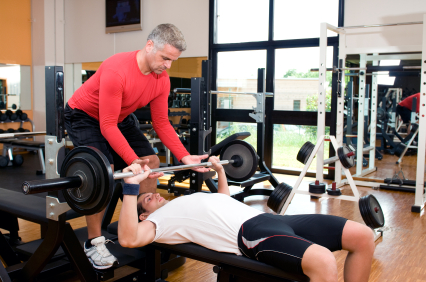As a runner, you may wonder what advantages or benefits there are to creating a strength training workout for yourself. There are a multitude of reasons…
Developing stronger leg muscles is a primary goal when training runners. It helps them increase their endurance and speed. However, it is important to remember that a well-rounded training program should also include exercises for the core.
WHY IS CORE STRENGTH IMPORTANT FOR RUNNING?
A comprehensive workout program should include exercises for all muscle groups. This is why you take your time to create a training program that incorporates movements of the upper body and its muscles in addition to the lower body.
A strength training workout that only targets one part of the body can be more detrimental than helpful. It can lead to an imbalance and raise the likelihood of injury. So why is working on a strong core so advantageous for runners?
Three advantages to consider when thinking about this question are increased stability and balance, enhanced running performance, and a lower potential for running-related injuries. This answer is slightly complicated.
INCREASE YOUR STABILITY AND BALANCE
When running, one may observe a lot of movement in the top half of their body. This can range from swaying side to side to having an awkward gait. To rectify these issues, core strength should be improved.
Having excellent core stability leads to a more fluid run. It restricts movement in the upper body so maintaining correct form is easier. Moreover, it simply feels better.
The stabilization of the upper body can help to maintain balance, which is especially useful for trail runners dealing with rough terrain.
IMPROVE YOUR RUNNING PERFORMANCE
 Having a strong core helps with improved posture, which in turn can help improve performance. What are the benefits?
Having a strong core helps with improved posture, which in turn can help improve performance. What are the benefits?
Should you find your core is now strong enough to keep your body upright when running, you may discover it’s easier to go faster and for a longer duration. To test this, try going for a jog while leaning too far forward or backward. How long can you last before feeling fatigued?
When engaging in long distance running, having the right posture is essential. This is because when you hunch your shoulders or neglect to keep your core tight, it can have a detrimental effect on your body over time.
REDUCE THE RISK OF RUNNING INJURIES
Having a solid core can help protect you from getting injured while running. This is because a strong core assists in having good posture when running. With an upright position and slight lean forward, it minimizes the probability of hurting the lower back.
Core strength helps to maintain balance and stability. This decreases the risk of injury to muscles, joints and bones by limiting uncontrolled and hazardous motions.
Having a strong core can help you maintain a better balance, which reduces the risk of falling. Good balance while running enhances the quality of your run and keeps it safe.
INCLUDE THESE MUSCLE GROUPS IN CORE TRAINING PLANS
The term “core” is typically associated with the abdominal muscles. Yet a thorough core conditioning exercise involves engaging numerous muscle groups. Such as:
Abdominal muscles – these cover the entire abdominal region and include the transverse abdominis, rectus abdominis, external obliques and internal obliques.
The lower back is home to a variety of muscles that help maintain the core. One such muscle is the erector spinae, which runs along the length of the spine and helps to keep it upright. This is an essential aspect of proper running posture.
The hip flexors, an essential part of the core muscle group, consists of several muscles in the hip region. These include muscles located in the upper thigh, muscles where the thigh meets the pelvis, and muscles located in the inner thigh.
The glutes, or butt muscles, are apart of the core. This includes the gluteus maximus, medius and minimus. These muscles all work together to help maintain good posture.
Runners can avoid injury and improve performance by engaging in a core strengthening workout which targets all muscle groups in the torso region. This enables them to maintain proper running form, providing stability to ensure an injury-free run.
DEVELOPING A PROGRAM FOR RUNNERS
What does a successful core training regimen entail? This varies depending on whether the individual is exercising in the gym or primarily engaging in at-home workouts.
BUILDING CORE MUSCLES AT THE GYM
At gyms, as opposed to exercising online or at home, you can use a range of equipment for core-strengthening which is beneficial for running.
Using a machine with various cables is a great way to develop your abs. Examples of core exercises using this equipment include cable crunches, as well as reverse crunches. If you have a pull-up bar, try hanging leg circles to benefit your core.
BODYWEIGHT EXERCISES FOR THE CORE
The best way to improve core strength is through exercise. But since most exercises require equipment, here are some bodyweight ones to get you started and ‘get your blood flowing’. They are efficient and can be done between more challenging sessions.
Planks are a fantastic way to build core strength. They require all of the muscles in your abdomen, lower back, hips, and glutes to work together to keep the body stable. By introducing various plank modifications into your workout routine, you can customize the intensity and tailor it according to your fitness level and objectives.
The superman pose enhances core strength, which also strengthens arms, shoulders and legs. This upper body control is advantageous for runners and a strong lower body helps to improve running speed and power.
This exercise, referred to as a jackknife or pike crunch, is an excellent way to build core strength. Those with a higher level of fitness are best suited for the V-up as it requires considerable core strength.
Your core workout should include the glute bridge. This exercise strengthens all of the muscles in the hip and butt region, aiding leg movement when you run: lifting and lowering them.
Front leg lifts work the muscles in the upper thigh and pelvic floor. Doing side leg lifts will help improve hip strength. For even muscle balance, it’s important to perform lifts on both left and right legs.
USE A STABILITY BALL FOR EVEN MORE BENEFITS
A research team analyzed the effects of adding 25 minutes of stability ball exercises to a male athlete’s training program. This was done twice a week for six weeks. It was observed that using the ball noticeably improved core stability without excessively tiring out the muscles.
Core routine exercises to try with a stability ball include crunches (front and side), a tuck, and forearm planks. Hip thrusts, glute bridges, and squats can all be modified to use the stability ball.
A Bosu ball, also known as a half-ball, can be employed to enhance a workout. For example, mountain climbers can be made more challenging using one of these during strength training. To improve core endurance, gradually increase the duration spent doing this exercise.
CARDIO EXERCISES THAT CONTRIBUTE TO A STRONG CORE
Strength training programs focusing on the core are important, but cardio exercises should not be forgotten either. Running with proper form can help strengthen the midsection as it requires engaging core muscles. Other cardio options to consider include:
Burpees
Jumping jacks
Planks (various types)
Reverse crunches
Adding these movements to your workouts improves muscle strength while also offering benefits to their cardiovascular system.
This is just the beginning, as there are many good core workouts for you to try. Get yourself into a routine and before you know it, you’ll see significant improvements in your running.


